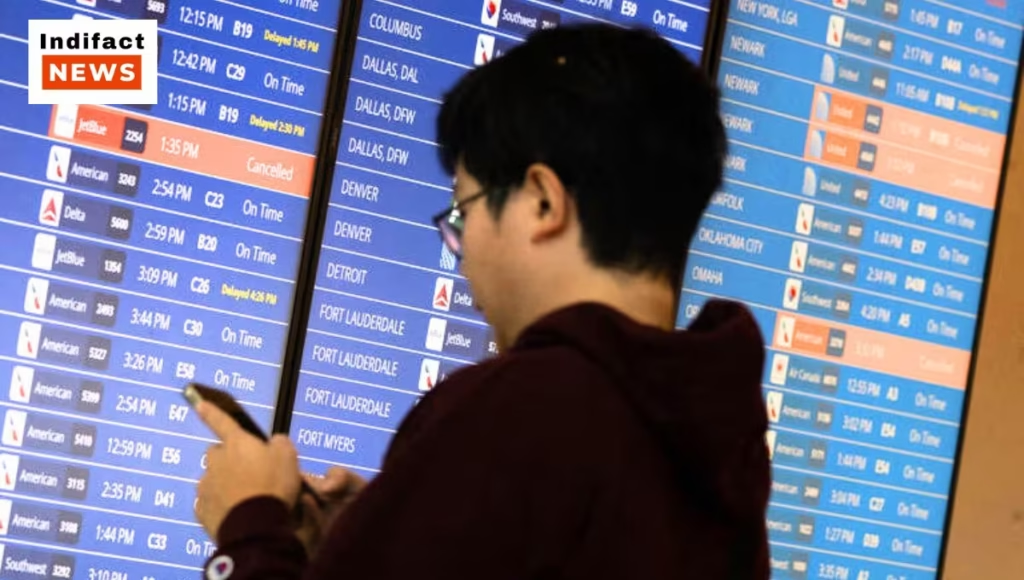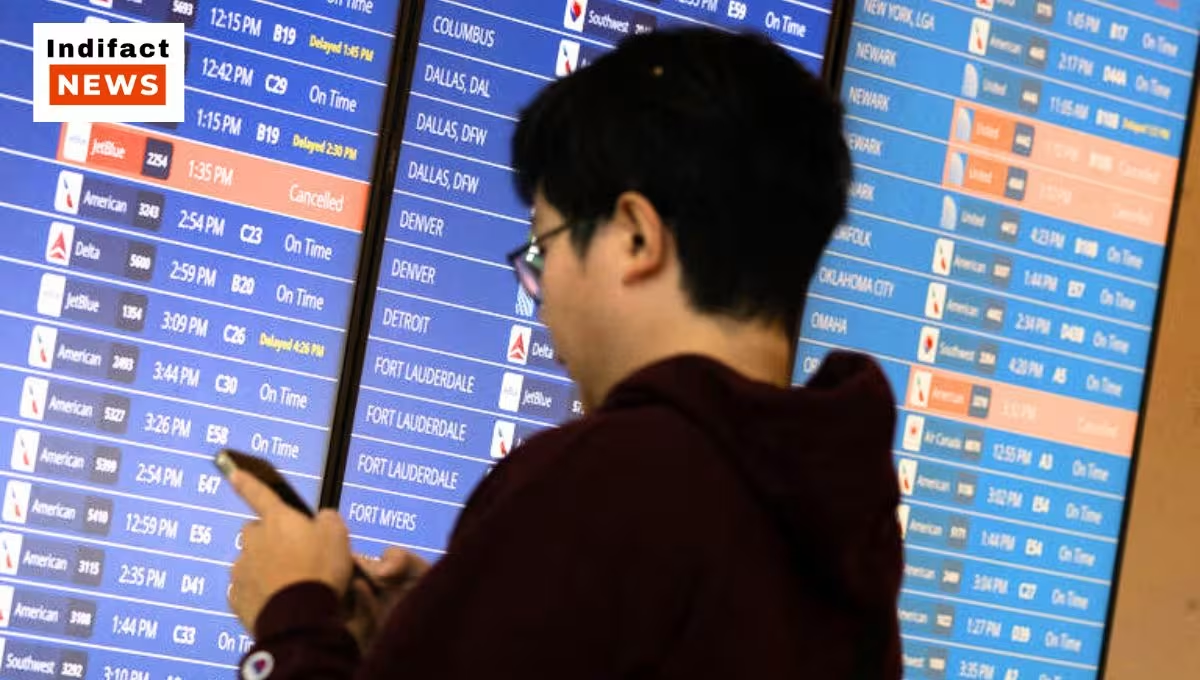
Flights Canceled U.S
For thousands of travelers across the United States, Tuesday morning began with frustration and uncertainty. Flights Canceled U.S according to FlightAware, more than 1,200 flights were canceled nationwide, and nearly 3,000 more were delayed, marking the latest wave of widespread travel disruptions affecting airports coast to coast.

The chaos, which began over the weekend, has left passengers stranded in terminals, sleeping on benches, and scrambling for rebookings as airlines grapple with staffing shortages, stormy weather, and air traffic control constraints.
From New York to Los Angeles, frustrated travelers took to social media, sharing photos of packed terminals and long rebooking lines. The delays, many said, felt like déjà vu from the summer travel nightmares.
Click here to read more on Flights Canceled U.S
“I’ve been at the airport since 4 a.m. my flight’s been delayed three times, and now it’s canceled,” wrote one passenger on X (formerly Twitter). “No updates, no help, just chaos.”
Which Airlines and Airports Were Hit the Hardest?
Flights Canceled U.S airlines across the board felt the turbulence, but Southwest Airlines, American Airlines, and Delta were among the most affected carriers.
- Southwest Airlines saw more than 300 cancellations and 600 delays, particularly across its Dallas Love Field and Chicago Midway hubs.
- American Airlines grounded over 250 flights, with Charlotte and Philadelphia experiencing the most significant disruptions.
- Delta Air Lines reported around 200 cancellations, as bad weather disrupted operations in Atlanta, the world’s busiest airport.
Meanwhile, on the East Coast, New York’s LaGuardia Airport and Newark Liberty International Airport were hit by heavy fog and gusty winds, causing dozens of flight diversions.
In total, at least 40 major U.S. airports reported operational delays, according to FAA data a reflection of how interconnected air travel chaos can ripple across the entire system.
Weather Meets Workforce Woes
While winter storms are often the usual suspects in travel chaos, this time the weather was only part of the problem.

Experts say the airline industry continues to struggle with chronic staffing shortages, especially among air traffic controllers and ground crews.
“Even minor weather disturbances can trigger chain reactions when airlines are operating with thin margins of labor,” explained Aviation analyst Sara Mitchell. “The U.S. air system is efficient but fragile one delay can echo through dozens of connected flights.”
The FAA has also acknowledged ongoing challenges in managing airspace congestion, Flights Canceled U.S particularly along the East Coast corridor. Despite efforts to modernize systems, staffing gaps at key control centers have left little room for flexibility when bad weather strikes.
Passengers Face Long Waits, Limited Options
For travelers, Flights Canceled U.S the situation has been nothing short of exhausting. With flights booked to capacity due to post-holiday demand, rebooking options were scarce.
Some passengers were told they’d have to wait up to two days for the next available seat. Others were offered flight vouchers or partial refunds but few alternatives for getting home quickly.
Rental car counters also saw a spike in demand, with rates surging in major cities as desperate travelers hit the road.
“We’ve seen a surge of travelers turning to rental cars when flights get scrapped,” said Mark Davis, spokesperson for a major car rental company. “But inventory is tight, and rates are climbing.”
For those lucky enough to rebook, even those flights faced hours-long delays as airports worked to clear the backlog.
The Broader Impact A Wake-Up Call for U.S. Aviation
This latest disruption comes at a sensitive time for the airline industry. After a strong rebound in 2024, U.S. carriers are under pressure to prove they can manage high passenger volumes without collapsing under strain.

Analysts warn that without increased investment in staffing and infrastructure, such episodes could become more frequent.
“We’re seeing a system operating at full throttle with very little buffer,” said Mitchell. “One bad storm or system outage can set off a domino effect that lasts for days.”
What Passengers Can Do Next
If your flight was affected, experts recommend checking your airline’s mobile app or website rather than waiting in long airport queues. Most carriers are now offering fee-free rebooking options, and in some cases, travel credits for future use.
Apps like FlightAware and TripIt can also help travelers monitor real-time updates and alternate route availability.
And while the skies may be stormy now, forecasts suggest that conditions should improve by midweek, allowing airlines to restore normal schedules by Thursday evening.
Until then, patience and maybe a good book might be the best carry-on you can pack.

